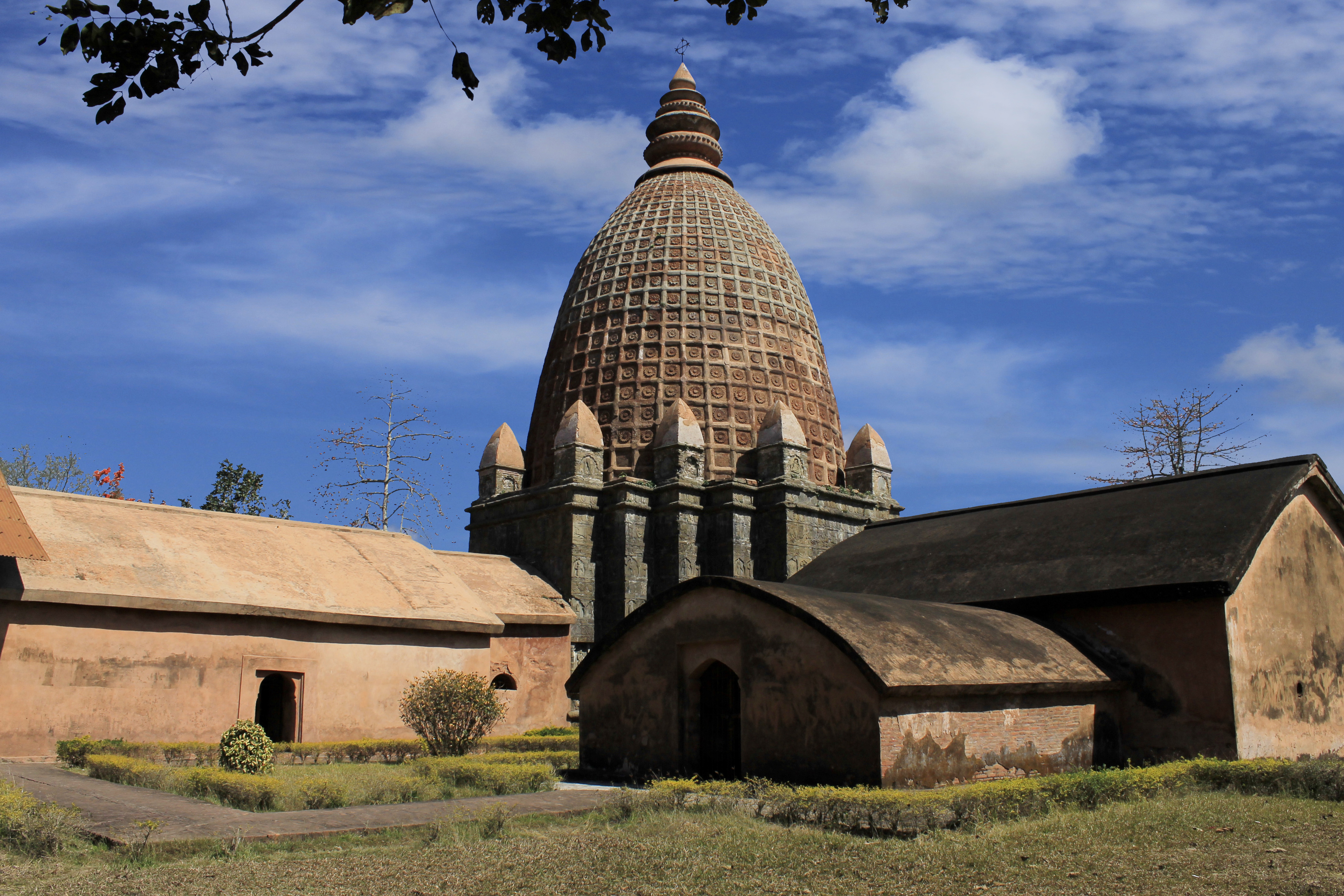Devi Dol stands as a profound testament to the rich cultural and religious tapestry of the Ahom dynasty in Assam. Located in the Sivasagar district, this remarkable temple complex embodies the syncretic traditions of Hinduism intertwined with local Assamese folklore, representing a pivotal moment in the region's historical narrative.
The temple's origins trace back to 1734, during the reign of Ahom King Siva Singha, when Queen Phuleshwari Devi commissioned its construction. This act was more than a mere architectural endeavor; it was a deliberate cultural statement that reflected the Ahom Kingdom's nuanced approach to religious expression and social integration.
Architecturally, Devi Dol is a marvel of historical craftsmanship. Standing 60 feet high with a base diameter of 120 feet, it forms part of a complex that includes Shiva Dol and Vishnu Dol. Each structure represents a different divine manifestation, symbolizing the complex religious landscape of the era. The temple's design speaks to the sophisticated architectural sensibilities of the Ahom artisans, who blended structural integrity with profound spiritual symbolism.
The temple complex is not merely a static historical monument but a living cultural space. During Durga Puja, it transforms into a vibrant center of religious celebration, drawing devotees from across the country. The festival becomes a powerful manifestation of continuous cultural traditions, connecting contemporary spiritual practices with centuries-old rituals and beliefs.
The historical context of Devi Dol is inseparable from the broader narrative of the Ahom dynasty. For over six centuries, this kingdom represented a unique political and cultural entity in northeastern India, characterized by its ability to absorb and harmonize diverse cultural influences. The temple's construction reflects this remarkable capacity for cultural synthesis, bridging indigenous traditions with mainstream Hindu practices.
Beyond its religious significance, Devi Dol serves as a critical historical artifact. It provides insights into the social dynamics, political structures, and cultural aspirations of the Ahom period. The temple stands as a tangible reminder of a sophisticated society that balanced religious devotion with complex political maneuvering, ultimately creating a distinctive regional identity.
The British colonial intervention eventually transformed the political landscape, annexing the Ahom Kingdom in the early 19th century. Yet, structures like Devi Dol remained resilient, preserving cultural memories and continuing to serve as important spiritual and community spaces. They represent continuity amidst significant historical transformations, embodying the enduring spirit of Assamese cultural heritage.
In contemporary times, Devi Dol has evolved into a significant tourist destination. Visitors can explore not just the temple complex but also nearby historical structures like Rang Ghar, Talatal Ghar, and Kareng Ghar. These sites collectively offer a comprehensive narrative of Ahom architectural and cultural achievements, inviting deeper understanding of this remarkable historical period.




